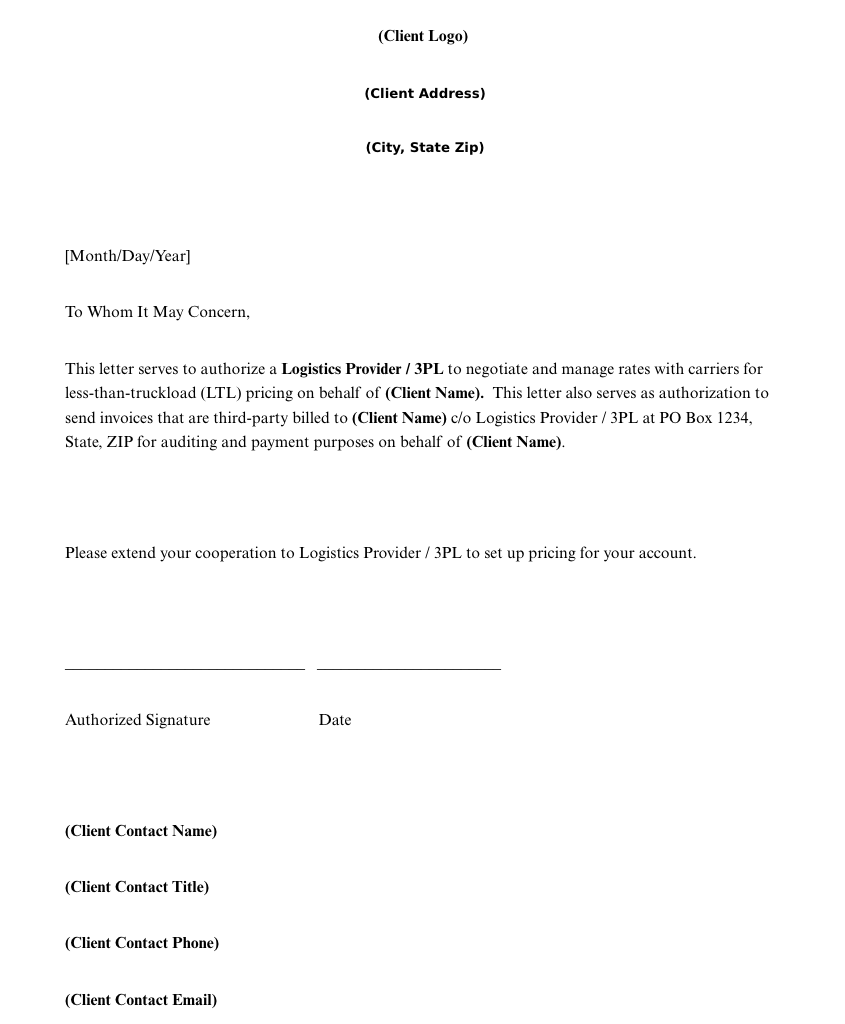- Let's Talk Logistics
- Posts
- LOAs in LTL - It's a Broken Process
LOAs in LTL - It's a Broken Process
You're probably wondering....
’Why am I receiving two different emails about the #LTL newsletter in my inbox?’
It's Official: You now have VIP access to all things #LetsTalkLogistics!
As part of the #LTL community, you'll have exclusive looks at in-depth content that goes far beyond our LinkedIn newsletter. Expect expert interviews, practical tips, special reports, and interactive content designed to help you navigate the world of LTL shipping - we're stoked to have you here.
Looking forward to giving you the latest and greatest in LTL news...stay tuned for more and in the meantime, Let’s Talk Log—err, I mean LOAs!!

As an LTL shipper, securing the most competitive rates is always a top priority.
However, the means of achieving that kind of buying power can be a challenge – everyone’s looking for ways to minimize the impact of freight spend on their margins/profitability.
Most companies go through a few phases of ‘growth’ in relation to LTL; SMB’s typically work with a broker to get access to better buying power, and as they grow, they start to explore going directly to the carriers to get the ‘wholesale’ rates.

Most companies end up using a blend of both direct carriers + a few brokers as they scale up.
At a certain point though, shippers with enough leverage are looking to streamline the operation and have as few points of contact as possible to solve supply chain issues.
This leads many Mid-Market brands to work all-in with a 3PL for tech, customer service, claims, returns, reconsignments, one-stop-shop convenience, etc… but these brands still demand the best possible rate for each carrier.

If you are in the LTL industry, you likely know what an LOA is; but I’ll still give a brief overview of the process below.
From there, I opine on the problem with LOAs, how shippers abuse the process, and what you should do instead to optimize your pricing power!
A Letter of Authorization, or LOA, is a formal document used in the LTL shipping industry - it authorizes a third party, such as a freight broker or another intermediary, to negotiate freight rates on a shipper’s behalf.

This document ensures that all parties involved are aware of and consent to the terms being negotiated.
How the LOA Process Currently Works:
Shipper Initiates Request
The shipper begins the process by drafting an LOA, which typically includes essential details such as the shipper's name, contact information, and specific instructions regarding rate negotiations.

The shipper sends the LOA to the chosen broker or third party, granting them the authority to negotiate rates with LTL carriers. This step formalizes the relationship and responsibilities.
Negotiation with LTL Carriers
Armed with the LOA, the broker/3PL approaches LTL carriers to negotiate pricing and terms. The LOA will serve as proof of authorization, allowing the broker to secure more favorable rates on behalf of the shipper.

Confirmation and Documentation
Once the negotiations are complete, the broker provides the shipper with the agreed-upon rates and terms. The shipper then confirms these details, and the LOA process is documented for future reference.
Alright - now that we have a refresher on the process, let’s talk about the problems…
Abuse and Skepticisms
While the LOA process is designed to streamline rate negotiations and ensure transparency, it has unfortunately been subject to misuse by some shippers and brokers.

This abuse has led to a growing sense of skepticism among LTL carriers. Here’s why:
Some brokers misuse their LOA by overextending their authority, negotiating terms that exceed what was initially agreed upon with the shipper.

This can lead to misunderstandings and conflicts, and it damages trust between all parties involved.
Misrepresentation of Shipper's Intentions
In some cases, brokers may misrepresent the shipper's intentions, pushing for rates and terms that do not align with the shipper's actual needs or capabilities.
This misalignment can result in unfavorable terms for the shipper and strain relationships with carriers.

Frequent Changes & Lack of Consistency
The lack of consistency in the LOA process, with frequent changes and varying levels of detail, contributes to confusion and distrust among LTL carriers.
Carriers might become wary of accepting LOAs, fearing hidden terms or last-minute changes.
Multiple LOAs = Too Much Confusion

Another significant issue arises when shippers sign LOAs with multiple brokers without informing them of each other’s existence.
Consequently, carriers receive bids and LOAs from several brokers for the same shipper, creating chaos and confusion.

The carriers are left uncertain about who actually 'owns' or 'manages' the freight, which complicates the negotiation process - it often results in the carriers offering less favorable pricing to all involved brokers, ultimately harming the shipper’s ability to secure competitive rates.
To summarize…
There are three parties involved in a typical LOA—the Shipper, Carrier, and Logistics Provider.
Each party must act in good faith. Having more transparency throughout the process is necessary.

If the shipper sends multiple Logistics providers an LOA, the carrier has no idea which logistics provider ‘owns’ the relationship.
If the carrier sees a logistics provider continuously abusing the process, that carrier will end up declining bids—which ultimately hurts the shipper.
If the shipper acts in good faith but works with a logistics provider who has abused the process in the past, the shipper is still impacted negatively.

Here’s the solution:
Carriers should punish the bad-acting 3PLs by giving more favorable pricing to the logistics service providers who do it the right way and represent the shipper’s interest in good faith.
Additionally, the LOA process needs updating.

A signed management agreement holds a lot more water; and IF a Logistics service provider has a signed management agreement that details pricing services in addition to other services, this document should ‘trump’ the LOA and be used as a substitute.
I won’t hold my breath for the carriers to act on this advice…and I certainly don’t expect the bad actors to have a ‘come to Jesus’ moment either.
If you have ever been burned by a 3PL who abused the LOA process or misrepresented your intentions, leave a comment or share the post with your story!
(Sunlight is the best disinfectant 🌞)